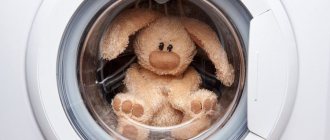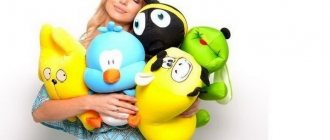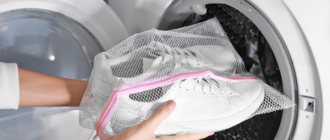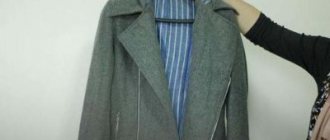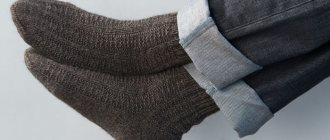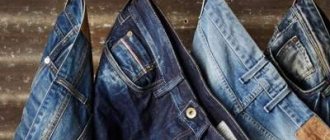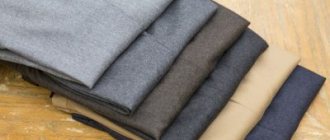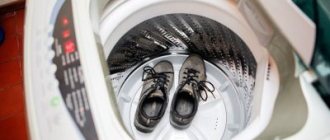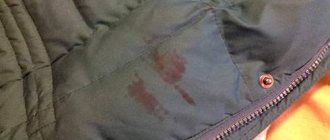When a child appears, parents have many questions. One of them is how to properly wash soft toys. Often the baby carries his soft friend with him everywhere, tastes him, drops him on the playground, and then tries to put him to bed with him. Meanwhile, dust, microorganisms, and mites accumulate on the surface of the toys, which can cause allergic reactions in the child. To protect your baby from contact with contaminants, it is important to pay special attention to the hygiene of soft toys.
Soft toys are constantly near children, so it is very important to keep them clean
Is it possible to wash soft toys at home?
To figure out whether washing will damage the toy, you need to pay attention to the label. It is there that basically contains information about whether the product can be washed, and which method is suitable for this (in a machine or by hand).
It is not advisable to wash the following toys:
- with electronics and musical elements;
- with natural filling (feathers, sawdust, buckwheat husk);
- with glued nose, eyes and other decorations.
Toys made from wool, felt and other natural materials will have to be washed by hand. The fact is that washing in a machine will most likely lead to significant deformation. You won’t be able to wash huge toys that don’t fit in the machine’s drum. Such products are washed by hand. But at the same time, drying them is problematic, since they absorb a lot of water. And due to prolonged drying, the filler will simply lock out.
You can take a large toy to the dry cleaner. If you can't do this, for example, because of the high price, you can dry clean it or rip the seams and pull out the filling. And after washing, stuff it back and sew it up.
Soft toys that contain small balls cannot be machine washed, as the seams may come apart. And in this case, not only the product itself will be damaged, but also the equipment.
Drying
- We do not dry it in direct light. The color may fade. This may leave the ends of the fur rough or crusty, but you can comb them out with a comb.
- Don't be tempted to use the dryer - it's not worth the risk! They will lose their shape or the seams will not withstand such pressure.
- We dry it by hanging it with a clothespin. But do not dry the ears; if the toy is heavy, they may come off or stretch. Can be dried in a laundry net. Avoid direct sunlight so as not to dry it out and to prevent the color of the toy from fading.
- Heat from blow-drying or tumble drying can cause damage, especially to plastic parts.
Approved detergents for washing children's toys
It is important to remember that if a child is allergic to any gel or powder, then it is prohibited to use them for cleaning.
What could theoretically work:
- Shampoo. It is advisable to wash toys intended for children under three years of age with baby shampoo.
- Baby powder. Products should be washed separately from other items. The fact is that if there are black things in the washing machine, the lint will be visible on them.
- Detergent for washing delicate items in the form of capsules, which are suitable if there is no baby powder.
- Laundry soap. It is considered effective as it copes well with stains and other contaminants. It should not be used for white products; they may become yellowish.
- Baby soap. It can be used to remove heavy stains.
An ordinary conditioner is suitable as a rinse aid, but for children's clothes. It will make the artificial fur soft and fluffy, as well as fragrant.
Often, detergents are not washed out of toys well enough. Due to the fact that the child is in close contact with them, choose powders and soaps with a hypoallergenic composition.
Are they dirty?
Watch a child play with a teddy bear, bunny or rag doll. He not only rolls the toy on the floor, there are also hugs and kisses, and a taste test. What adds to the problem is that no matter how cleanly you tidy your apartment, the ubiquitous dust still penetrates the premises and settles on surfaces. It is not always possible to notice how gradually a toy loses its brightness of color under a layer of dust.
Children spend a lot of time with soft toys, so these products will definitely need to be washed.
In addition, children often do not let go of their favorite soft toys for literally a minute. This means that the soft playmate will probably swim in a puddle, roll around in the sandbox and smear himself on the grass. As you can see, periodic washing is simply necessary for such toys. Otherwise, the germs along with the dirt will transfer to the child.
Soft toys should be washed as they become dirty. If your child really loves such an item, then washing should be done at least every 2-3 weeks. Before you start cleaning, look at the toy label: care instructions are indicated there.
Unfortunately, dust mites are permanent residents of soft toys, and they can cause allergies in a child.
How to properly wash toys in an automatic machine
Machine washable only for those toys that have this indicated on the label. If there is no tag, then you should use the recommendations that will consistently tell you how to wash soft items in a washing machine.
In this case, it is better to adhere to the following algorithm:
- Put them in the drum. Products with glued parts are best placed in special bags. This way you will not damage the machine if the elements come off. If you don't find laundry bags on sale, you can put them in a large pillowcase and tie it.
- Pour or pour a sufficient amount of detergent into the powder compartment.
- Wash on a gentle cycle. The temperature regime should not be too aggressive. A temperature of 30 degrees is suitable.
- Use an extra rinse.
- Squeeze toys at minimum speed (400-600).
How to wash soft toys by hand
Washing by hand is the most gentle method. It is suitable in cases where the product does not contain tags with washing information. Consistent instructions will tell you how to properly clean your soft friend.
Actions must be performed in the following sequence:
- Pour warm water into a basin (30°C will be enough).
- Place the toy in the basin.
- Lather it with baby shampoo, you can use other products that we talked about above.
- Soak it for 10 minutes, no more.
- Next, remember it carefully and from all sides.
- This type of washing may leave stains. Rub these areas more thoroughly. If there are greasy stains, soak a cotton swab in alcohol and apply to them - the stains will come off.
- Finally, rinse the toy in clean, cool water to ensure no cleaning agent remains.
Washing musical soft toys
Be careful not to get any liquid on the musical mechanism. Therefore, the sensor should be removed before washing. To do this, simply open one of the side seams. And after washing you can put it back in its place. Before throwing a soft product into the drum, quickly add stitches to the seam so that the filler does not end up on the outside.
You can return the mechanical device inside the soft toy only after the filling inside it has completely dried. This way the batteries will not oxidize, and the mechanism itself will not be damaged by water.
But to tidy up your electronic friend, whose whole body is covered in wires, it is best to use wet or dry cleaning.
Recommendations
make washing toys by hand easier :
- All manipulations must be carried out using rubber gloves.
- If there is some kind of electronic unit inserted inside the toy (for music, lighting, etc.), it must be removed before washing.
- Cleaning must be done very carefully, especially around small parts (eyes, nose) and those that are glued rather than sewn.
- Before washing, make sure that all seams are well stitched and small parts on the material are carefully secured.
- Toys that need washing should not be stored together with new and clean ones.
If a toy, even after careful treatment, becomes stained and fades heavily, this indicates its low quality and the use of questionable materials and dyes. There’s definitely no point in regretting something like this.
How to wash and clean a plush toy
You can simply wash the plush elephants and bunnies, or you can use another method: cleaning with steam. Perhaps it is the safest and most environmentally friendly. Steam is not capable of exerting a mechanical effect on materials. This means that you simply cannot damage the toy. Only products equipped with electronics should not be cleaned in this way.
To begin with, all plush animals should be cleaned with a vacuum cleaner, and then a small area of the product should be treated with steam to accurately understand whether the material will deteriorate. If all is well, you can safely continue. A powerful stream of steam will allow you to soften the dirt. After that, you can simply brush them off.
The preferred way to care for plush yarn toys is hand washing. It will be enough to wash the toy in warm water. The temperature should be no more than 30 degrees. You should use baby shampoo. No need to squeeze. Just let the moisture soak into the towel. It would be enough. Otherwise, the toy will be deformed. Wet cleaning is also suitable, which will be discussed below.
Ways to wash knitted toys
It is advisable to wash knitted toys regularly, but it is better to wash them by hand and in warm water. For cleaning, mild products without bleaching effect or without stain removers are suitable. Try to rinse any remaining detergent from your child's pets.
If you are not afraid, then you can wash such toys in a machine, but on a delicate wash. The toy must be placed in a laundry bag. But you can also use ordinary wet wipes for cleaning if the product is not very dirty.
Rules for washing soft toys during quarantine
It is necessary not only to wash toys at home, but also to disinfect them periodically. Wash the toy at temperatures above 60 degrees; viruses cannot withstand high temperatures. If the tag says that washing can only be done at low temperatures, then you can additionally destroy germs using a steamer or an iron with a steam function.
Use the following methods:
- Ultraviolet treatment. It can be carried out using a quartz lamp. Or you can simply place the items in the sun.
- Freezing. Small toys can be placed in a bag and placed in the freezer for two days. Most viruses and microbes die in such an environment.
- Steam treatment. To destroy bacteria, you can simply treat the surface of children's toys with steam.
Steam generator application
If you have a steam cleaner in your home, tidying up a large toy will not be a problem. Steam not only allows you to refresh the material, but also removes dirt, fights mold and other pathogens.
When steaming, avoid contact with surfaces that may become deformed. This group includes natural materials (for example, linen, wool).
If the toy has a built-in electrical device (clock, music generator, etc.), you should not use a steam cleaner. Without damaging the product, this can only be done after removing the electronic unit.
Before using the steam generator, the toy must be vacuumed. This will improve processing efficiency.
How and with what to clean a toy that cannot be washed
Dry cleaning is ideal for products that are equipped with electronics, light and sound modules, as well as those filled with foam or foam balls or decorated with decorations.
Before cleaning, you need to put the toy in a pillowcase or a special laundry bag. Prepare a cleaning agent: it is best to use baking soda or starch for this purpose. Such substances do an excellent job of removing dirt.
Pour some starch into the bag, zip it up and shake thoroughly. The absorbent will be evenly distributed throughout the product. The toy should be left in the starch for at least an hour. You need to shake the contents periodically. When you remove the toy from the bag, carefully clean its surface with a brush. If there is still absorbent on the toy, remove it with a vacuum cleaner.
For wet cleaning, you need to dissolve a mild detergent in water (it should be warm), wet the sponge with foam and start wiping the toy. Do not press too hard, the product should not absorb foam. Try to rinse the sponge from dirt more often.
Dry cleaning
If the toy is made of materials that cannot be wetted or has glued elements, water cannot be used at all for cleaning.
For dry cleaning you will need:
- a vacuum cleaner with an attachment for cleaning small items;
- soda (the amount depends on the size of the product, but not less than a couple of packs);
- a large plastic bag in which the entire item would fit;
- napkins.
The amount of soda is determined taking into account the fact that the item must be completely sprinkled with it. If there is even more of it, it’s not scary; for cleaning it’s more of a plus than a minus. Instead of soda, you can use potato starch.
Cleaning procedure:
- Thoroughly vacuum the product from all sides.
- Place the toy in a large bag prepared in advance and sprinkle it with soda.
Squeeze out excess air from the bag.- The top of the bag must be tied.
- The bag must be shaken and squeezed vigorously so that the toy comes into contact with the soda on all sides.
- Set the bag aside for an hour. During this time, the soda will absorb all the contaminants.
- Once again actively knead and shake the bag.
- Get a toy.
- Use a napkin slightly moistened with water to go over the dirty places on the material. If necessary, they should be rubbed.
- If there are uncleaned areas, then you need to add soda to them and rub some more.
- Use a dry cloth to shake off the baking soda from the surface.
- Vacuum the product.
The cellophane bag for processing must be chosen to be dense and able to withstand the vigorous impact of the cleaning process.
How often should you wash soft toys?
If you are a caring mother, try to periodically clean or wash toys. This must be done once a month, in no case less often. Otherwise, over time, they will turn into a real breeding ground for microbes.
If you follow the simple rules given in this article, you can not only get rid of dirt and germs on toys, but also maintain their attractive appearance. Remember that the child comes into close contact with them, so they should always be clean.
The finishing touch
We sew all the parts back, insert back the device for sound or movement. Don't forget to warn your baby to handle them carefully. Don't forget to brush it before giving your beloved Teddy back.

